Prepping for disasters can seem overwhelming with so many aspects to be considered. However, for those just beginning to recognize how perilous these times are and are new to prepping, you can find many great survival foods at your local grocery store.
There are many freeze-dried food options offering light-weight ready to eat meals. These are cost effective and great for new preppers. But if you don’t have a lot of $’s laying around to buy a large supply, it may be better to pick up a few buckets quarterly and some basic key items each week at the supermarket to build up your food bank gradually.
It’s best to keep your survival food list simple, and concentrate on storing foods with the highest amount of calories and the longest shelf life. This list is geared toward foods that will help you survive a crisis that lasts for extended periods of time.
Here are the ten best and cheapest survival rations available at any store:
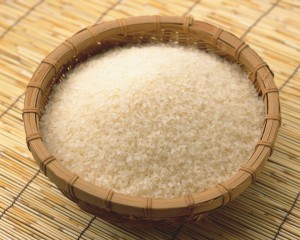
Rice
Rice: Every time you go to the store you should buy one 10-lb bag of rice. You can find them for around $5 at most supermarkets. Rice will stay in good condition for 10 years or more if stored properly. It offers high carbohydrates which is especially important if you are exerting a lot of physical energy during a crisis.
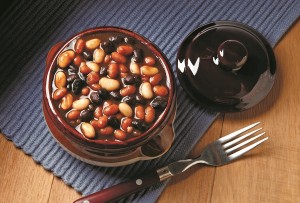
Beans
Beans: Beans are known to be one of the best all-round survival foods. They’re high in protein, and if sealed in food-grade buckets with a small amount of dried ice, they’ll stay for up to ten years. Make sure to store them in a cool, dry, dark location. Buy a 4-5 lb bags of dried beans every time you go to the store. All dry beans are good to store; black beans, red beans, pinto beans, lentils, etc.
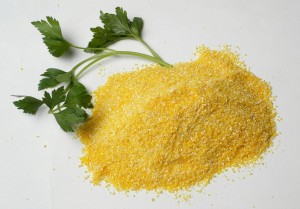
Cornmeal
Cornmeal: All-purpose flours are good to store, but cornmeal may be the best overall. Cornmeal is packed with dense carbohydrates and contains oils that helps extend its shelf life. Additionally, if the power grid is down during a mega disaster, it is much easier to make good corn breads and tortillas with cornmeal in a simple skillet or solar oven, where refined flour will need yeast and oil to make decent bread or biscuits. Get a 5-lb bag of cornmeal ($10-$15) at each grocery visit. Seal and store the same way as beans (buckets, salt and dry ice), and it will safely keep 8 months to 2 years.
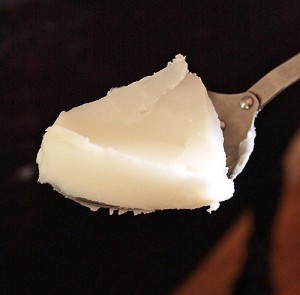
Lard
Lard: If you’re a health-conscious reader, hydrogenated lard does not sound very appetizing, but in a survival situation you can’t afford to be picky. Animal lard or vegetable shortening both offer much-needed calories during times of crisis, cooking oil for multiple uses, and it will keep longer than cooking oils because of the hydrogenation. Buy a 6-lb can ($12) and store in a cool, dry, and dark place and it will stay good for 2-3 years or longer.
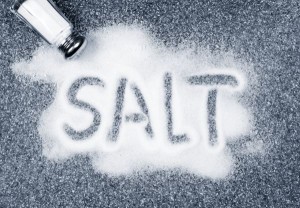
Salt
Salt: Salt is one of the most useful survival food items. It’s used for storing food, curing beef, and flavoring most meals. Salt will last forever, so always buy extra when you’re shopping.
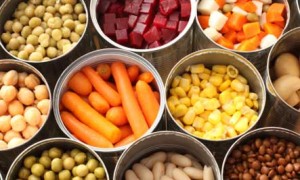
Canned Fruit and Vegetables
Canned Fruit & Vegetables: These are another obvious survival food, but not as practical as many would think. They’re heavy and somewhat costly for the calories they deliver. Additionally, acidic fruits and any cans with tomatoes will not keep as long as most people think. But most canned food is good for 5+ years. Buy green vegetables and fruits like peaches and pears for long-term storage, but more importantly, buy what you already eat in case you need to rotate them into your diet before they go bad.
Canned Meat: Canned meats like ham, tuna, and chicken are excellent to store. They typically will keep for 6-10 years and they’re an excellent source of protein. However, if the grid is down for a long time (apocalyptic), hunting and fishing will likely provide most meats. Therefore, it may be sufficient to buy extra canned meats every other time you go shopping.
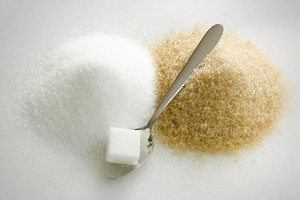
Sugar
Sugar: Brown and white sugar will add much-needed flavor and calories to a survival diet and they’ll keep for ten years or more if stored properly. Honey is also excellent as it will store forever. Make sure to buy extra every other time you go grocery shopping. You won’t need too much, but they’ll be well worth having if a crisis strikes.
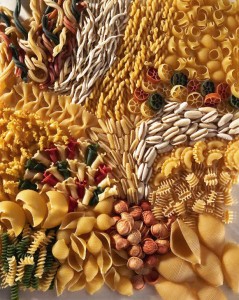
Pasta
Pasta: Pasta is a good light-weight storable food that is also a great source of carbohydrates. Pasta will not keep as long as rice, but it can stay for around 5 years in good conditions. Pasta is also very inexpensive and extra should be bought at each trip to the store. It will take up more space in your food bank than rice, beans and cornmeal, so plan your space the best you can.
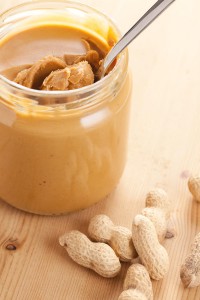
Peanut Butter
Peanut Butter: Peanut butter is a terrific source of protein, fat, and calories. Plus, it’s just a great treat to have on hand. Peanut butter can last up to five years in root cellar conditions. Stock up whenever there are good deals at your grocery store. You’ll be happy you did if the SHTF.
If you consistently buy these items 3-4 times per month, you’ll quickly acquire a year’s supply of survival rations for your whole family.
Buying at a bulk grocery store may help you either save money, or get more supplies. There are Costco discount codes to help you get these items at a better price.
How to store it?
A really basic way to store the rice, beans, cornmeal, sugar and pastas is to buy several 5-gallon seal-able paint buckets or food-grade buckets from your local hardware store. Put a cup or so of salt into a sandwich baggie (opened) at the bottom of the buckets. Then fill it with food stuffs and add a couple of ounces of dried ice (found at large grocery stores) which will remove the oxygen from the bucket after it’s sealed. Finally, label each bucket with its contents and the date, and place it in your cellar.
Please let us know what other food items you think will be useful for new preppers….
via Activist Post: 10 Best Survival Foods At Your Local Supermarket.

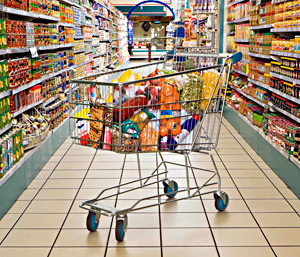
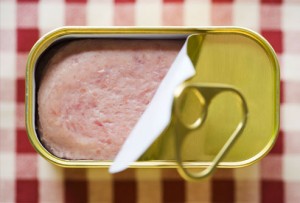
Where else can you store food items if you don’t have a celler
Great suggestions.
Just a couple of Caveats:
1) Leave the bucket lid loose when you put that dry ice in because as it melts it gives off CO2 gas that displaces the oxygen in the bucket. When the dry ice has (mostly) dissipated, then secure the lid. If you don’t follow this procedure, the bucket could burst and your foodstuffs will be spread all around your storage area. 2) Also, when using plastic buckets, be aware that vermin can chew their way through plastic pails quite quickly and ruin your supplies, so watch where you store it and (for sure) keep them off the concrete floor to prevent leaching unwanted flavors into your foods.
3) Sealed mylar bags inside the buckets offer an added layer of odor-free (therefore vermin-free) protection to your stored goods.
There are other sites with thorough instructions about storing foods that would definitely offer more guidance than has been presented in this article.
Great article!
Personally I use a vacuum sealer and break my beans and rice into servings for my family.
Prevents the need for the dry ice in the buckets. Plus, when I break open that bucket, I am not exposing the entire contents. I can go in and take a single bag of rice, for example, and open that and the rest of my rice store stays vacuum sealed.
Excellent feedback John. Thanks.
Brown rice has 5 times the nutritional value of white. We buy basmati. Don’t sprout kidney beans, they are poisonous. Get salt with iodine and sea salt with micronutrients and mix. You forgot the Spam. Now in a wide variety of flavors. Tupelo honey is the only honey that will not granulate. Use as a sugar substitute. Keep peanut butter cool.
Canning is also a great food storage method. Also drying and canning and dehydrating food is another.